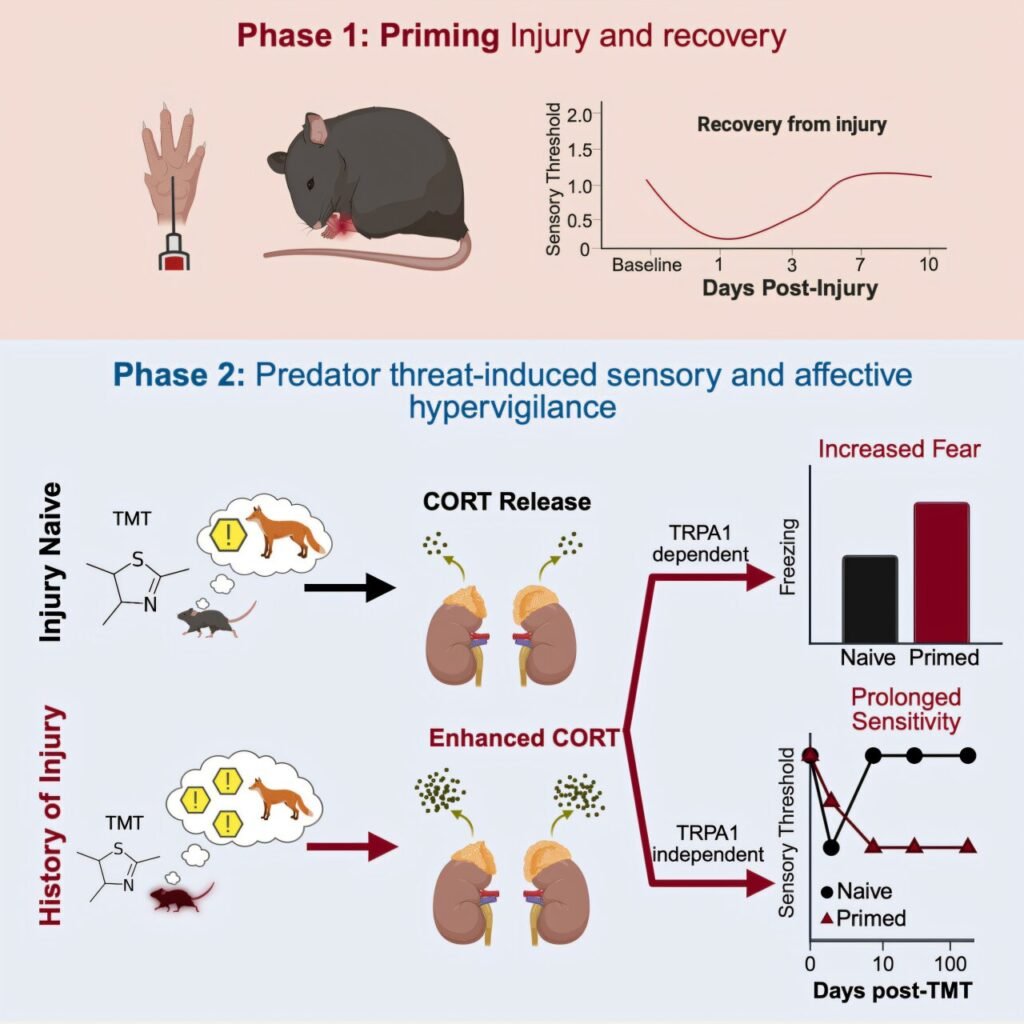A recent study published in Current Biology sheds light on how past injuries can have long-lasting effects on the body’s stress response system. The research, conducted by scientists at the University of Toronto Mississauga, found that previous injuries can sensitize the body to overreact to stress, pain, and fear even after the physical damage has healed.
The study, led by Dr. Loren Martin and graduate student Jennet Baumbach, focused on mice that had a history of injury. These mice displayed heightened sensitivity to stressors, particularly in response to the scent of a predator. Notably, the mice exhibited exaggerated fear responses and developed long-lasting pain in their hind paws, even on the uninjured side. Surprisingly, these symptoms persisted for more than six months after the initial injury had healed.
The researchers identified a key link between stress hormones and lasting pain. They discovered that the stress hormone corticosterone interacts with a protein called TRPA1, known as the “wasabi” receptor, to amplify sensitivity to future threats. This signaling pathway keeps the nervous system on high alert, leading to increased fear and pain responses even in the absence of new injuries.
Interestingly, while both TRPA1 and stress hormones were involved in the exaggerated fear response, long-lasting pain was primarily driven by stress signaling. This suggests that fear and pain may be regulated by separate biological mechanisms. By targeting these pathways, such as blocking corticosterone or inhibiting the TRPA1 receptor, researchers believe it may be possible to reverse heightened stress responses and develop new treatments for chronic pain, PTSD, and other stress-related disorders.
Dr. Martin emphasized the importance of understanding how trauma rewires the nervous system to address fear and pain. By dissecting the brain circuits that control these behaviors, researchers hope to develop targeted therapies that can help individuals overcome the long-term effects of past injuries and trauma.
The study, titled “A history of injury enhances affective and sensory responses to predator threat by sensitizing corticosterone release through TRPA1 receptor signaling,” provides valuable insights into the complex interplay between past injuries and stress responses. This research opens up new avenues for exploring the mechanisms that underlie chronic pain conditions and anxiety disorders.
For more information on this study, you can access the full article in Current Biology (DOI: 10.1016/j.cub.2025.07.005). This groundbreaking research was conducted by the University of Toronto and offers promising prospects for understanding and treating the long-term effects of past injuries on the body’s stress response system.


